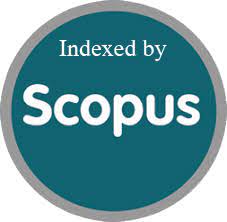The Role of E-Wallets in Enhancing Business Operations and Consumer Satisfaction in the Unorganized Sector of Nagpur City
DOI:
https://doi.org/10.52783/jns.v14.2009Keywords:
E-wallets, digital payments, unorganized sector, business operations, consumer satisfaction, Nagpur, financial inclusion, fintech adoptionAbstract
The digital payment solutions especially e-wallets have changed how businesses operate and consumers transacted across industries. But in the vast unorganized sector, where cash is king, the entry of e-wallets has open doors of opportunities as well as posed some challenges as well. The study analyses the impact of e-wallets in the business growth and consumer satisfaction in the unorganized sector of Nagpur. Using a mixed method approach, primary data was gathered through structured surveys and interviews from small business owners and consumers. The findings suggest important determinants of applicable adoption of e-wallet, such as ease of use, transaction security, financial literacy and infrastructural barriers. Inherent to the aforementioned sections is the role that e-wallets play in improving business processes, record keeping and overall efficiency, and serving as a convenient tool for consumers even though those factors are not directly part of the research. Digital payment in the form of e-wallets has made both shopping and payments easy and can be made in a couple of clicks and make the customer experience better, but trust issues and lack of awareness are known to be some of the biggest challenges in the location. The study ends with valuable suggestions focused on the need of stakeholders like policy makers, banks and financial institutions and fintech companies in the enhancing adoption of digital payments in unorganized sector which will lead towards financial inclusion and economic development.
Downloads
Metrics
References
Aarti, G., Pramod, B., & Vineet, K. (2021). Vietnam mobile payment market size, share, growth: Analysis – 2027. Allied Market Research. Retrieved from https://www.alliedmarketresearch.com/vietnam-mobile-payment-market
Abrahão, R. D., Moriguchi, S. N., & Andrade, D. F. (2016). Intention of adoption of mobile payment: An analysis in the light of the Unified Theory of Acceptance and Use of Technology (UTAUT). RAI Revista de Administração e Inovação, 13(3), 221–230. https://doi.org/10.1016/j.rai.2016.06.003
Adiani, W., Aprianingsih, A., Fachira, I., Debby, T., & Maharatie, A. P. (2024). Social influence, financial benefit, and e-wallet multi-brand loyalty: The mediating impact of commitment. Cogent Business & Management, 11(1), Article 2290228. https://doi.org/10.1080/23311975.2023.2290228
Agarwal, R., & Prasad, J. (1998). A conceptual and operational definition of personal innovativeness in the domain of information technology. Information Systems Research, 9(2), 204-215. https://doi.org/10.1287/isre.9.2.204
Ajzen, I. (1991). The theory of planned behavior. Organizational Behavior and Human Decision Processes, 50, 179–211. https://doi.org/10.1016/0749-5978(91)90020-T
Al-Adwan, A. S., Li, N., Al-Adwan, A., Abbasi, G. A., Albelbisi, N. A., & Habibi, A. (2023). Extending the technology acceptance model (TAM) to predict university students’ intentions to use metaverse-based learning platforms. Education and Information Technologies, 28(11), 15381-15413. https://doi.org/10.1007/s10639-023-11816-3
Aldahdouh, T. Z., Nokelainen, P., & Korhonen, V. (2020). Technology and social media usage in higher education: The influence of individual innovativeness. SAGE Open, 10(1), 20. https://doi.org/10.1177/2158244019899441
Alkawsi, G., Ali, N., & Baashar, Y. (2021). The moderating role of personal innovativeness and user experience in accepting smart meter technology. Applied Sciences, 11(8), 3297. https://doi.org/10.3390/app11083297
Al-Maghrabi, T., & Dennis, C. (2011). What drives consumers' continuance intention to e-shopping? Conceptual framework and managerial implications in the case of Saudi Arabia. International Journal of Retail & Distribution Management, 39(12), 899-926. https://doi.org/10.1108/09590551111183308
Almulla, M. (2021). Technology acceptance model (TAM) and e-learning systems use for education sustainability. Academy of Strategic Management Journal, 20(4), 1-13.
Alowayr, A. (2022). Determinants of mobile learning adoption: Extending the Unified Theory of Acceptance and Use of Technology (UTAUT). International Journal of Information and Learning Technology, 39(1), 1-12. https://doi.org/10.1108/IJILT-05-2021-0070
An, S., Eck, T., & Yim, H. (2023). Understanding consumers’ acceptance intention to use mobile food delivery applications through an extended technology acceptance model. Sustainability, 15(1), 832. https://doi.org/10.3390/su15010832
Arora, S., Kaur, M., & Jain, E. (2023). E-wallet adoption amidst COVID era: An empirical intervention with extended UTAUT2. Asian Journal of Business Research, 13(1).
Arvidsson, N. (2014). Consumer attitudes on mobile payment services – Results from a proof of concept test. International Journal of Bank Marketing, 32(2), 150-170. https://doi.org/10.1108/IJBM-05-2013-0048
Barclay, D., Higgins, C., & Thompson, R. (1995). The partial least squares (PLS) approach to causal modeling: Personal computer adoption and use as an illustration.
Bauer, R. A. (1960). Consumer behavior as risk taking. In R. S. Hancock (Ed.), Dynamic marketing for a changing world (pp. 389-398). American Marketing Association.
Baumgartner, H., & Steenkamp, J. B. E. (1996). Exploratory consumer buying behavior: Conceptualization and measurement. International Journal of Research in Marketing, 13(2), 121-137. https://doi.org/10.1016/0167-8116(95)00037-2
Black, N. J., Lockett, A., Winklhofer, H., & Ennew, C. (2001). The adoption of internet financial services: A qualitative study. International Journal of Retail & Distribution Management, 29(8), 390-398. https://doi.org/10.1108/09590550110397033
Bobbitt, L. M., & Dabholkar, P. A. (2001). Integrating attitudinal theories to understand and predict use of technology-based self-service: The Internet as an illustration. International Journal of Service Industry Management, 12(5), 423-450. https://doi.org/10.1108/EUM0000000006092
Brown, S. A., & Venkatesh, V. (2005). Model of adoption of technology in households: A baseline model test and extension incorporating household life cycle. MIS Quarterly, 29(3), 399-426. https://doi.org/10.2307/25148690
Downloads
Published
How to Cite
Issue
Section
License

This work is licensed under a Creative Commons Attribution 4.0 International License.
You are free to:
- Share — copy and redistribute the material in any medium or format
- Adapt — remix, transform, and build upon the material for any purpose, even commercially.
Terms:
- Attribution — You must give appropriate credit, provide a link to the license, and indicate if changes were made. You may do so in any reasonable manner, but not in any way that suggests the licensor endorses you or your use.
- No additional restrictions — You may not apply legal terms or technological measures that legally restrict others from doing anything the license permits.










